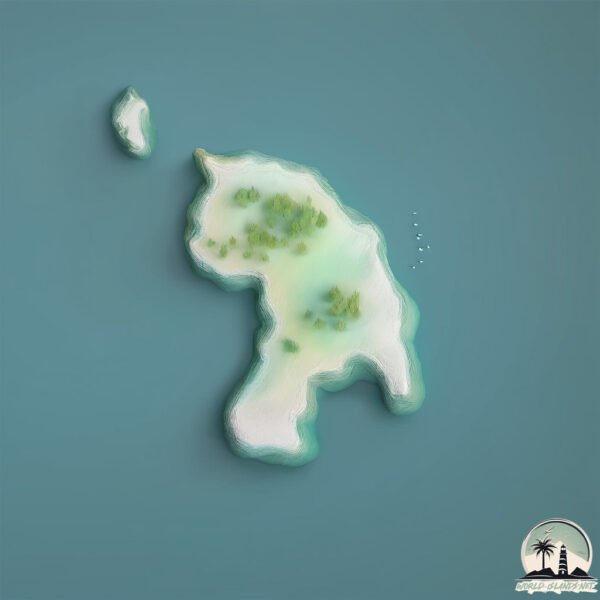Welcome to Isabel , a Tropical island in the North Pacific Ocean, part of the majestic Pacific Ocean. This guide offers a comprehensive overview of what makes Isabel unique – from its geography and climate to its population, infrastructure, and beyond. Dive into the details:
Geography and size of Isabel
Size: 0.837 km²Coastline: 5.2 kmOcean: Pacific OceanSea: North Pacific OceanContinent: North America
Isabel is a Tiny Island spanning 0.837 km² with a coastline of 5.2 km.
Archipel: –
Tectonic Plate: North America – Covers North America and parts of the Atlantic and Arctic Oceans, characterized by diverse geological features and varying levels of seismic activity.
The geographic heart of the island is pinpointed at these coordinates:
Climate and weather of Isabel
Climate Zone: TropicalClimate Details: Tropical Savanna, WetTemperature: Hot
Climate Characteristics: Defined by distinct wet and dry seasons with high temperatures year-round. Pronounced rainfall occurs during the wet season, while the dry season is marked by drought.
Topography and nature of Isabel
Timezone: UTC-07:00Timezone places: America/DenverMax. Elevation: 8 m Mean Elevation: 2 mVegetation: Cultivated LandTree Coverage: 49%
The mean elevation is 2 m. The highest elevation on the island reaches approximately 8 meters above sea level. The island is characterized by Plains: Flat, low-lying lands characterized by a maximum elevation of up to 200 meters. On islands, plains are typically coastal lowlands or central flat areas.
Dominating Vegetation: Cultivated Land
Vegetation: 1 vegetation zones – Minimal Diversity Island
Infrastructure and Travelling to Isabel
Does the island have a public airport? no .
Does the island have a major port? no .
The mean population of Isabel is 0 per km². Isabel is Uninhabited. The island belongs to Mexico .
Continuing your journey, Otro Lado is the next notable island, situated merely km away.
Isabela Island Tips - The Best Snorkeling Spot in the Galapagos & Where to Find Affordable Tours
Looking for some Isabela Island travel tips? Isabela is one of our favorite islands in the Galapagos, so, in this video, we'll explore ...
Isabela Island Tips - The Best Snorkeling Spot in the Galapagos & Where to Find Affordable Tours
Looking for some Isabela Island travel tips? Isabela is one of our ...
Looking for some Isabela Island travel tips? Isabela is one of our favorite islands in the Galapagos, so, in this video, we'll explore ...
GALAPAGOS: ISLA ISABELA is Animal Paradise - TRAVEL GUIDE in 4K
The Galapagos in Ecuador is one big animal paradise. Nowhere in the ...
The Galapagos in Ecuador is one big animal paradise. Nowhere in the world you can see wild animals so easily in their natural ...
GALAPAGOS ON YOUR OWN! TOP THINGS TO DO ON ISABELA ISLAND!
Things to do in Galapagos Island. Galapagos Island Tour. What to do in ...
Things to do in Galapagos Island. Galapagos Island Tour. What to do in Galapagos Island. Isabela Island is our first stop on our ...
Mexico is classified as Emerging region: MIKT: Mexico, Indonesia, South Korea, and Turkey – Economies recognized for their development potential and emerging market status. The level of income is Upper middle income.
News – Latest Updates and Headlines from Isabel
Stay informed with the most recent news and important headlines from Isabel. Here’s a roundup of the latest developments.
Loading...
Please note: The data used here has been primarily extracted from satellite readings. Deviations from exact values may occur, particularly regarding the height of elevations and population density. Land area and coastline measurements refer to average values at mean high tide.

